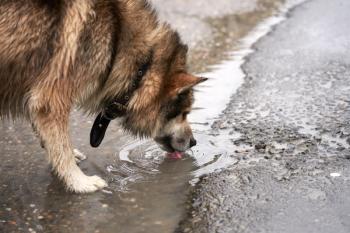
Study examines SARS-CoV-2 transmission from humans to their pets
Investigators attempted to estimate the human-to-pet transmission rate of the virus and identify the risk factors, including food and water bowls.
This article was orginally published by
Since the start of the COVID-19 pandemic, scientists have believed that SARS-CoV-2 likely jumped from a mammal source to humans. However, it is still unclear how human and animal interaction frequency affects transmission. So, what about humans with their pets? Should they be concerned? Does the virus transmit to their human owners from cats, dogs, hamsters, and other pets?
The results of a cross-sectional, One Health study of the transmission of SARS-CoV-2 from pets to their humans was recently published in the Emerging Infectious Diseases journal. This study also described types of human-animal contact and risk factors for household transmission.
The study’s investigators wrote that even though the virus spreads from individual to individual now, in the United States, 110 domestic cats and 95 domestic dogs had been reported by the US Department of Agriculture Animal and Plant Health Inspection Service to have SARS-CoV-2 infection as of October 17, 2022.
The authors noted that “the results indicate that household transmission of SARS-CoV-2 from humans to animals occurs frequently, and infected animals commonly display signs of illness. We furthermore show that close human-animal contact is common among persons and their pets in this study population, that this contact appears to enable SARS-CoV-2 transmission. That pet owners are familiar with and willing to adopt measures to protect their pets from COVID-19.”
The study was conducted as a community-based study of pets in households with more than 1 confirmed human SARS-CoV-2 infection. Two study personnel, including at least 1 veterinarian, performed the samplings in the participant’s home or at a local veterinary hospital. The study personnel did not use muzzles, nor did they use chemical restraint because of biosafety concerns.
Clinical signs consistent with SARS-CoV-2 among 119 dogs and 57 cats were reported for 20 dogs (21%) and 19 cats (39%). The investigators noted that of 81 dogs and 32 cats sampled, 40% of dogs and 43% of cats tested seropositive, and 5% of dogs and 8% of cats were polymerase chain reaction (PCR) positive. The authors said delays in sampling could cause this discordance. The respondents commonly reported close human-animal contact and were willing to take measures to prevent the virus’s transmission to their pets. However, the reported preventive measures showed a slightly protective but nonsignificant movement for both illness and seropositivity in pets. In particular, “sharing of beds and bowls had slight harmful effects, reaching statistical significance for sharing bowls and seropositivity,” the authors noted.
“Our study contributes useful and novel findings to the literature on cross-species transmission of SARS-CoV-2, with relevance to other zoonoses transmitted in a household setting,” the authors wrote in the study. “In particular, our findings indicate households in this population are willing to adopt measures to protect their pets from SARS-CoV-2 infection and that these measures might be effective, indicating an opportunity to prevent household transmission of zoonoses through health education and policy.”
Veterinarian Julianne Meisner, PhD, MS, BVM&S, an assistant professor in global health at the University of Washington, Seattle, Washington, and the lead author of the study, and with her colleagues, wrote, “We defined animal infection or illness with SARS-CoV-2 as an animal meeting [greater or equal to] 1 of the following criteria: SARS CoV-2 RBD ELISA‒seropositive status, PCR-positive status, or illness consistent with SARS-CoV-2 infection, hereafter referred to as illness, defined as participant answer of yes to the survey question ‘Since the time of COVID diagnosis/symptom onset in the household, has this animal had any new issues with difficulty breathing, coughing or decreased interest in playing, walking, or eating?’ We parameterized serostatus as ELISA ratio, log-transformed for interpretability, and PCR-positive status and illness as binary variables.”
The study’s authors show that in this population, close contact between human-animal contact is usual among individuals and their pets, and this contact seems to support SARS-CoV-2 transmission. Fortunately, pet owners from the study were aware of and willing to adopt measures to protect themselves and their pets from COVID-19. The prevalence of virus-positive animals was greater than 90% in multi-pet households with greater than or equal to 1 positive pet. Meisner et al, note that their results “largely align with results from Canada (positive effect for bedsharing in cats; 41% of dogs and 52% of cats seropositive; however, few PCR-positive pets) and studies from Texas and Arizona indicating that household pet interspecies transmission of SARS-CoV-2 is common.”
For more on this story, visit
Reference
Meisner J, Baszler TV, Kuehl KE, et al. Household Transmission of SARS-CoV-2 from Humans to Pets, Washington and Idaho, USA. Emerging Infectious Diseases. 2022;28(12):2425-2434. doi:10.3201/eid2812.220215.
Newsletter
From exam room tips to practice management insights, get trusted veterinary news delivered straight to your inbox—subscribe to dvm360.




